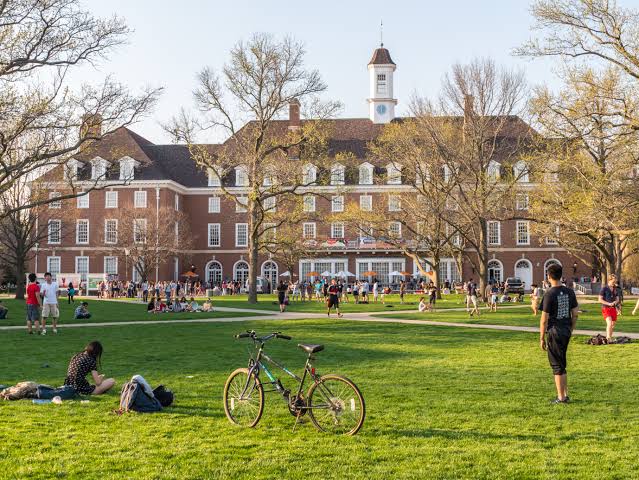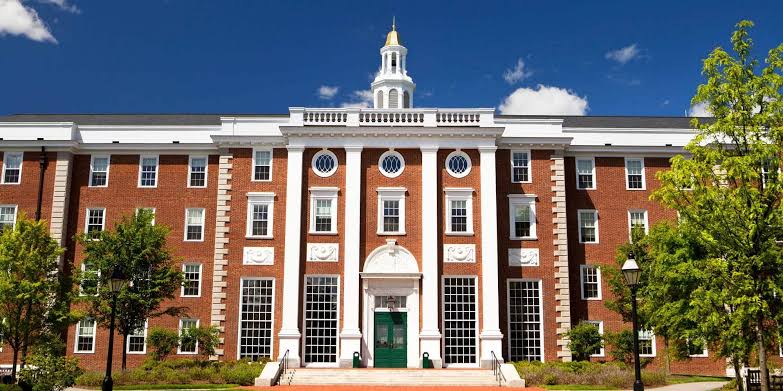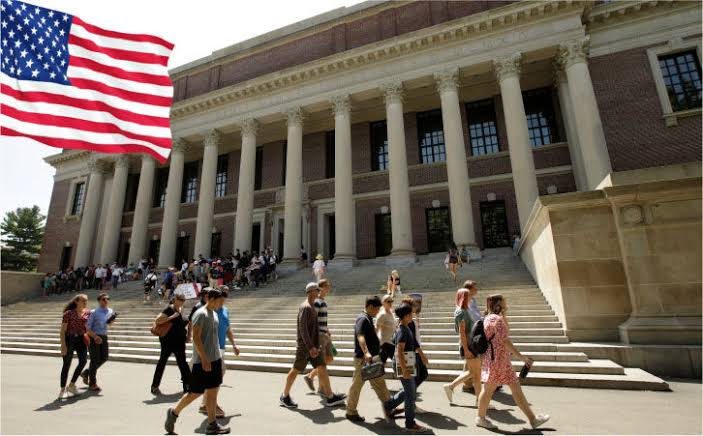In the realm of higher education, American Universities stand out as premier institutions renowned for their academic excellence, diverse student bodies, and rich campus cultures. For students aspiring to pursue higher education in the United States, navigating the vast landscape of American universities can be both exciting and daunting. From the ivy-clad walls of prestigious Ivy League institutions to the bustling campuses of state universities, the American higher education system offers a myriad of opportunities for personal and intellectual growth.
In this comprehensive guide, we delve into the world of American universities, providing an in-depth look at the various facets that make these institutions unique. Whether you’re a prospective student weighing your options or a parent seeking guidance for your child’s educational journey, this article aims to serve as a valuable resource to help you navigate the complex landscape of American higher education.
Join us as we explore the factors to consider when choosing an American university, highlight some of the top institutions in the country, and provide insights into the application process and student life at these universities. Whether you’re drawn to the vibrant cultural scene of urban campuses or the serene beauty of campuses nestled in scenic landscapes, American universities offer a diverse range of experiences to suit every preference.
So, if you’re ready to embark on a journey of discovery and academic pursuit, let’s dive into the world of American universities and explore the myriad opportunities that await you.
Recommended article: Universities In Boston America
Understanding American Higher Education

The education system in the United States is renowned for its diversity and opportunities for students. At the heart of this system are various types of institutions, each with its own unique characteristics and offerings. To navigate this system effectively, it’s essential to understand key terms and the different types of institutions available.
1. Key Terms:
- College: In the US, “college” typically refers to an institution that offers undergraduate programs leading to a bachelor’s degree. Colleges can be part of larger universities or independent institutions.
- University: A “university” is a higher education institution that offers undergraduate, graduate, and often doctoral programs. Universities are typically larger and more diverse than colleges, offering a wide range of academic disciplines.
- Community College: Community colleges, also known as junior colleges, offer two-year associate degree programs as well as vocational and technical training. They are often more affordable than four-year institutions and serve as a pathway to higher education for many students.
2. Types of Institutions:
- Public Universities: Public universities are funded by state governments and often offer lower tuition rates for in-state residents. They typically have larger student populations and a wide range of academic programs.
- Private Universities: Private universities are funded through tuition, donations, and endowments. They often have smaller class sizes and may offer specialized programs not available at public institutions.
- Liberal Arts Colleges: Liberal arts colleges focus on undergraduate education in the liberal arts and sciences. They often have smaller, discussion-based classes and a strong emphasis on critical thinking and writing skills.
- Research Universities: Research universities are known for their strong emphasis on research and often offer a wide range of graduate programs. They are typically larger institutions with extensive research facilities and resources.
Understanding these key terms and types of institutions is crucial for anyone considering higher education in the United States. Each type of institution offers unique opportunities and experiences, so it’s important to research and choose the one that best aligns with your academic and career goals.
Recommended article: Harvard University Scholarship and Admission
Factors to Consider When Choosing an American University
When it comes to selecting the right American university, several key factors can influence your decision. Understanding these factors can help you make an informed choice that aligns with your academic and personal goals.
1. Academic Programs and Majors Offered
American universities are known for their diverse range of academic programs and majors. From business and engineering to liberal arts and sciences, these institutions offer a wide array of disciplines to cater to various interests and career goals. When researching universities, consider the strength of their programs in your desired field of study. Look for universities that offer a robust curriculum, experienced faculty, and opportunities for hands-on learning and research.
2. Campus Culture and Social Life
The campus culture and social life at an American university can greatly impact your overall college experience. Consider factors such as the size of the student body, the diversity of the student population, and the availability of extracurricular activities and clubs. Additionally, look into the university’s reputation for fostering a supportive and inclusive community where you can thrive both academically and socially.
3. Location and Campus Environment
The location of the university can play a significant role in your college experience. Whether you prefer the bustling energy of a city campus or the serene beauty of a rural setting, consider how the location aligns with your lifestyle and personal preferences. Additionally, consider factors such as the climate, proximity to home, and availability of amenities and cultural attractions in the surrounding area.
4. Cost and Financial Aid Opportunities
The cost of attending an American university can vary widely depending on factors such as tuition, fees, and cost of living. Before making a decision, carefully evaluate the total cost of attendance and explore the financial aid options available. Many universities offer scholarships, grants, and other forms of financial assistance to help make education more affordable.
In summary, choosing the right American university is a significant decision that requires careful consideration of various factors. By understanding the academic programs offered, campus culture, location, and cost, you can make an informed choice that sets you on the path to a successful and fulfilling college experience.
Recommended article: Grand Canyon University: A Premier Destination for Higher Education and Online Learning
Top American Universities

Let’s take a closer look at some of the top-ranked American universities, as per reputable sources like US News, QS World University Rankings, and others.
1. Harvard University
- Located in Cambridge, Massachusetts, Harvard is renowned for its prestigious programs in law, business, and medicine.
- Notable features include its rich history, world-class faculty, and extensive library collections.
2. Stanford University
- Situated in the heart of Silicon Valley, Stanford is known for its innovation and entrepreneurial spirit.
- Offers top-ranked programs in engineering, computer science, and business administration.
3. Massachusetts Institute of Technology (MIT)
- MIT, situated in Cambridge, Massachusetts, is renowned for its pioneering research and technological advancements.
- It is distinguished for its focus on science, engineering, and mathematics.
4. California Institute of Technology (Caltech)
- Located in Pasadena, California, Caltech is renowned for its rigorous academic programs and groundbreaking research.
- Notable programs include physics, chemistry, and engineering.
5. Princeton University
- Situated in Princeton, New Jersey, Princeton University is known for its strong liberal arts curriculum and vibrant campus life.
- Offers top-ranked programs in the humanities, social sciences, and natural sciences.
6. Yale University
- Located in New Haven, Connecticut, Yale University is renowned for its historic campus and world-class faculty.
- Notable programs include law, medicine, and the arts.
7. Columbia University
- Situated in New York City, Columbia University is known for its diverse student body and vibrant campus culture.
- Offers top-ranked programs in journalism, business, and international relations.
8. University of Chicago
- Located in Chicago, Illinois, the University of Chicago is known for its rigorous academic programs and intellectual atmosphere.
- Notable programs include economics, political science, and sociology.
9. University of Pennsylvania
- Situated in Philadelphia, Pennsylvania, the University of Pennsylvania is known for its strong emphasis on interdisciplinary learning.
- Notable programs include business, medicine, and law.
10. Johns Hopkins University
- Located in Baltimore, Maryland, Johns Hopkins University is known for its world-class medical school and research facilities.
- Notable programs include public health, engineering, and international studies.
These universities represent just a fraction of the diverse educational opportunities available in the United States. Whether you’re interested in pursuing a degree in the arts, sciences, or humanities, American universities offer a wealth of academic and extracurricular opportunities to help you achieve your goals.
Recommended article: Online Business Degree Programs Accredited
Application Process for American Universities
Here’s an overview of the common application process, including deadlines, required documents, and standardized tests, along with tips for writing a strong personal statement and securing letters of recommendation.
1. Understanding the Application Timeline
The application timeline for American universities typically starts a year before the intended enrollment date. Deadlines vary from university to university, but generally, fall admissions deadlines are around December to January, while spring admissions deadlines are around August to September. It’s crucial to check each university’s specific deadlines and requirements, as they can vary.
2. Required Documents
- Transcripts: Most universities require official transcripts from all previous educational institutions attended. Transcripts need to be translated into English if they are in a different language.
- Standardized Tests: Common standardized tests required for admission to American universities include the SAT or ACT for undergraduate programs and the GRE or GMAT for graduate programs. International students may also need to take tests like the TOEFL or IELTS to demonstrate English proficiency.
- Letters of Recommendation: Most universities require letters of recommendation from teachers, counselors, or other individuals who can attest to your academic abilities and character. It’s important to choose recommenders who know you well and can provide detailed insights into your qualifications.
- Personal Statement or Essay: The personal statement is your opportunity to showcase your personality, achievements, and aspirations. It’s essential to write a compelling essay that highlights your strengths and reasons for wanting to attend the university.
3. Tips for Writing a Strong Personal Statement
- Be Authentic: Write about experiences that are genuinely meaningful to you and have shaped your academic and personal development.
- Showcase Your Achievements: Highlight your academic achievements, extracurricular activities, and any challenges you’ve overcome.
- Demonstrate Fit: Explain why you are a good fit for the university and how your goals align with the university’s values and offerings.
- Edit and Revise: Proofread your essay carefully and seek feedback from teachers or counselors to ensure it is well-written and error-free.
4. Securing Letters of Recommendation
- Provide Information: Provide your recommenders with a copy of your resume, transcripts, and any other relevant information to help them write a strong letter.
- Follow Up: Send a polite reminder to your recommenders close to the deadline to ensure they submit their letters on time.
By understanding the application process and following these tips, you can increase your chances of success in applying to American universities. Remember to start early, stay organized, and put your best foot forward in your application materials.
Recommended article: Transforming Passions into Careers: The Ultimate Guide to Universal Technical Institute (UTI)
Scholarships and Financial Aid for International Students
American universities offer a plethora of scholarships, grants, and financial aid options to help international students pursue their academic goals. These opportunities can significantly reduce the financial burden of studying in the US.
- Scholarships: Many universities offer merit-based scholarships to international students based on academic excellence, leadership qualities, or specific talents.
- Grants: Federal and state grants are also available to international students, depending on their financial need. These grants do not need to be repaid, making them an attractive option for students seeking financial assistance.
- Other Financial Aid: Besides scholarships and grants, international students can explore other financial aid options such as student loans, work-study programs, and sponsorships.
Tips for Applying for Financial Aid and Managing College Expenses
- Start Early: Begin researching scholarship and financial aid opportunities well in advance to meet application deadlines.
- Stay Organized: Keep track of application requirements, deadlines, and documents needed for each scholarship or financial aid application.
- Seek Guidance: Consult with the university’s financial aid office or a guidance counselor for assistance with the application process.
- Budget Wisely: Create a budget to manage college expenses, including tuition fees, housing, food, transportation, and personal expenses.
- Explore Part-Time Work: Consider part-time work or work-study programs to supplement your income and gain valuable work experience.
Recommended article: Expert Guidance on Mesothelioma, Maritime, and Accident Claims
Student Life in American Universities
Studying at an American university offers more than just academic opportunities. It’s also about experiencing a vibrant campus life and engaging in a variety of extracurricular activities. Here’s what you can expect:
- Student Activities: American universities boast a wide range of student clubs, organizations, and activities catering to diverse interests. From academic clubs to cultural associations, there’s something for everyone.
- Housing Options: Universities typically offer on-campus housing options for international students, including dormitories and apartment-style accommodations. Off-campus housing is also available in surrounding neighborhoods.
- Campus Facilities: American universities are known for their state-of-the-art facilities, including libraries, sports complexes, student centers, and recreational areas.
- Support Services: International students can avail themselves of various support services, including academic advising, career counseling, health services, and cultural adjustment programs.
FAQs About American Universities
1. What are the admission requirements for international students at American universities?
- Admission requirements for international students vary depending on the university and the program of study. However, common requirements include standardized test scores (such as the SAT or ACT), academic transcripts, letters of recommendation, a personal statement or essay, and proof of English proficiency (such as the TOEFL or IELTS).
2. How much does it cost to study at an American university as an international student?
- The cost of studying at an American university as an international student can vary widely depending on the university, the program of study, and whether you choose to live on or off campus. On average, international students can expect to pay between $20,000 and $50,000 per year for tuition, fees, and living expenses.
3. Are there scholarships available for international students at American universities?
- Yes, many American universities offer scholarships specifically for international students. It’s advisable to check with individual universities for their scholarship opportunities and application requirements.
4. What is the difference between colleges and universities in the United States?
- In the United States, colleges typically offer undergraduate programs and focus primarily on undergraduate education. Universities, on the other hand, offer both undergraduate and graduate programs and often have a stronger emphasis on research.
5. Can international students work while studying at an American university?
- Yes, international students studying at American universities on an F-1 visa are generally allowed to work on campus for up to 20 hours per week during the academic year and full-time during school breaks. However, off-campus work is more restricted and requires authorization from the U.S. Citizenship and Immigration Services.
Recommended article: Digital and Real-World Marketplace: A Comprehensive Guide
Conclusion
In conclusion, American universities offer a wealth of opportunities for international students seeking a world-class education. From prestigious academic programs to vibrant campus life, studying at an American university can be a transformative experience. As you embark on your journey to pursue higher education in the United States, remember to consider factors such as academic programs, campus culture, financial aid opportunities, and student life.
While the process of applying to American universities may seem daunting, it is important to stay informed and proactive. Research your options, reach out to university admissions offices and financial aid advisors, and seek guidance from current students or alumni. With careful planning and perseverance, you can navigate the complexities of the application process and find the right university that aligns with your academic and personal goals.
As you prepare for this exciting chapter in your academic journey, remember that studying at an American university is not just about earning a degree. It’s about immersing yourself in a new culture, expanding your horizons, and building lifelong connections. So, seize this opportunity to explore, learn, and grow, and make the most of your experience at an American university.
We hope this comprehensive guide has provided you with valuable insights and resources to help you make informed decisions about studying in the United States. Whether you’re dreaming of walking the hallowed halls of an Ivy League institution or embracing the vibrant campus life of a state university, the world of American higher education awaits you with open arms.
Best of luck on your academic journey, and may your experience at an American university be enriching, fulfilling, and unforgettable.

